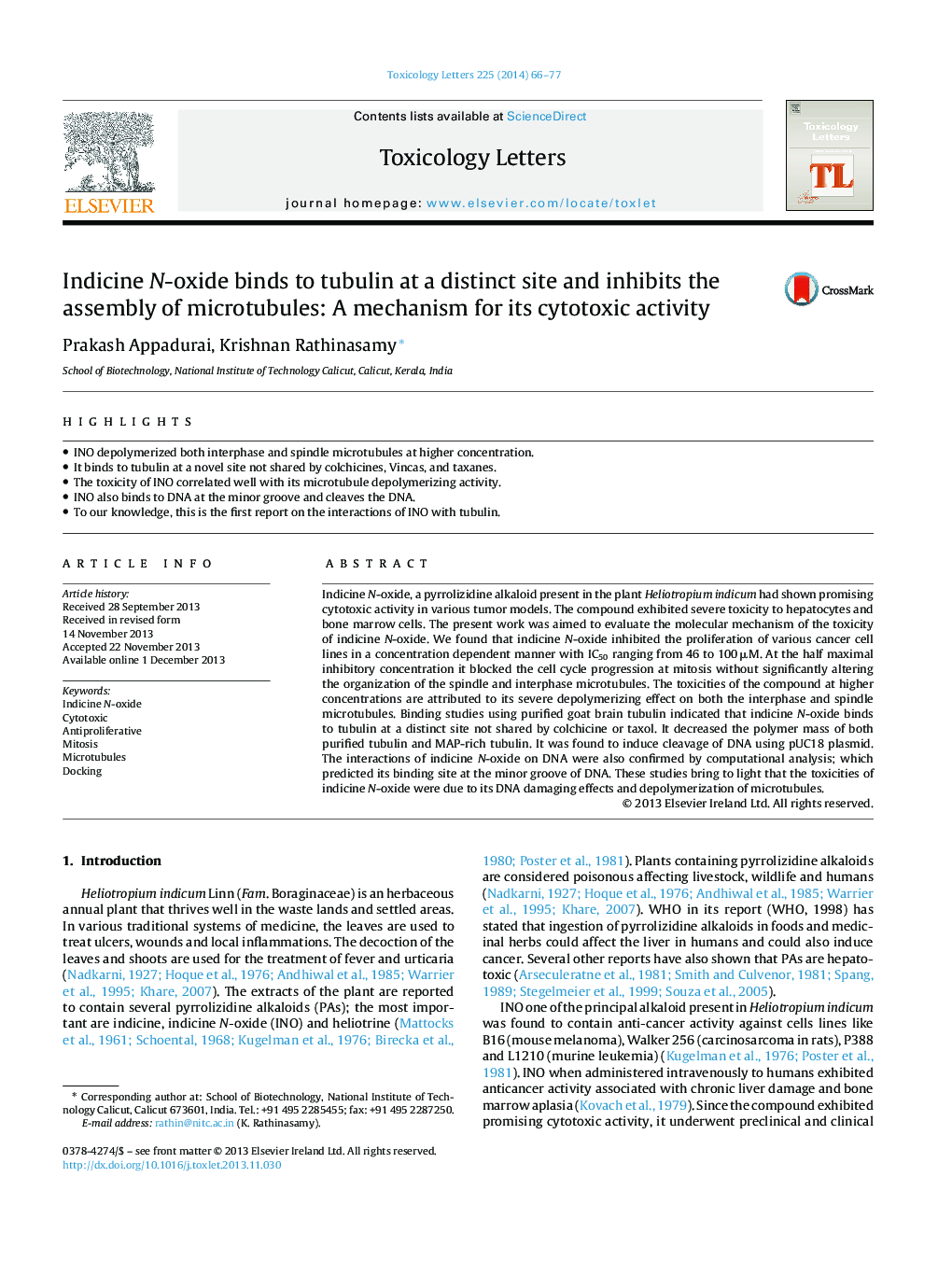| Article ID | Journal | Published Year | Pages | File Type |
|---|---|---|---|---|
| 5860476 | Toxicology Letters | 2014 | 12 Pages |
â¢INO depolymerized both interphase and spindle microtubules at higher concentration.â¢It binds to tubulin at a novel site not shared by colchicines, Vincas, and taxanes.â¢The toxicity of INO correlated well with its microtubule depolymerizing activity.â¢INO also binds to DNA at the minor groove and cleaves the DNA.â¢To our knowledge, this is the first report on the interactions of INO with tubulin.
Indicine N-oxide, a pyrrolizidine alkaloid present in the plant Heliotropium indicum had shown promising cytotoxic activity in various tumor models. The compound exhibited severe toxicity to hepatocytes and bone marrow cells. The present work was aimed to evaluate the molecular mechanism of the toxicity of indicine N-oxide. We found that indicine N-oxide inhibited the proliferation of various cancer cell lines in a concentration dependent manner with IC50 ranging from 46 to 100 μM. At the half maximal inhibitory concentration it blocked the cell cycle progression at mitosis without significantly altering the organization of the spindle and interphase microtubules. The toxicities of the compound at higher concentrations are attributed to its severe depolymerizing effect on both the interphase and spindle microtubules. Binding studies using purified goat brain tubulin indicated that indicine N-oxide binds to tubulin at a distinct site not shared by colchicine or taxol. It decreased the polymer mass of both purified tubulin and MAP-rich tubulin. It was found to induce cleavage of DNA using pUC18 plasmid. The interactions of indicine N-oxide on DNA were also confirmed by computational analysis; which predicted its binding site at the minor groove of DNA. These studies bring to light that the toxicities of indicine N-oxide were due to its DNA damaging effects and depolymerization of microtubules.
